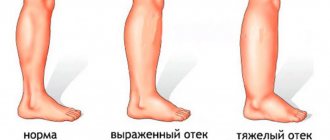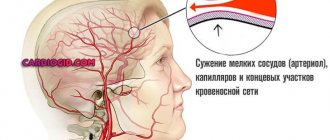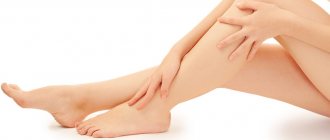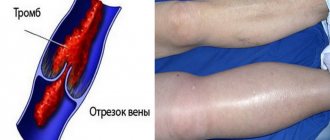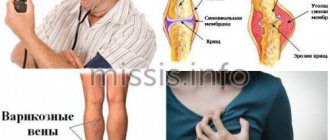Lymphatic edema of the lower extremities is a chronic disease in which there is a violation of the circulation of lymph, the biological fluid of the body. The latter is formed in tissues, accumulates in lymphatic capillaries and from there spreads throughout the body. Violation of its flow leads to stagnation of fluid in the limbs.
The disease can affect one or both legs. Both men and women are susceptible to the disease, but, as practice shows, the fair sex suffers from it much more often. This problem does not go away on its own. If lymphostasis of the lower extremities is not treated in any way, it will turn into an irreversible form, in which thickening of the legs is observed - elephantiasis.
At the Yusupov Hospital, through the joint efforts of specialists in various fields of medicine, an original comprehensive method for treating lymphostasis of the lower extremities was developed. The essence of the method is not only that swelling is “dispelled” from the affected limb, but also through a complex effect on the lymphatic system, lymphatic outflow is activated. This allows the body to further regulate the drainage function of the lymphatic system.
Treatment of leg lymphostasis must begin immediately. This pathology can progress quite quickly, leading to serious complications, such as impaired motor activity, the appearance of skin ulcers, inflammation, and sepsis. Pathology treatment is successfully performed at the Yusupov Hospital. For the treatment of lymphostasis, doctors draw up an individual treatment plan, which allows them to obtain the best results in eliminating the disease.
Types of pathology
In accordance with the modern classification, a distinction is made between primary lymphatic edema of the legs and secondary, that is, acquired, which develops with inflammation of the extremities. The causes of congenital lymphostasis are disturbances in the structure of the lymphatic system, such as the absence of certain lymphatic vessels or their expansion. This type of illness manifests itself at an early age. Acquired lymphostasis of the legs has more diverse causes.
In the initial stages, lymphostasis of the legs leads to the formation of extensive edema. As they develop, they turn from soft and reversible into intractable and dense formations. If acquired lymphostasis of the lower extremities is not stopped at the second stage, elephantiasis will develop. It worsens the quality of life and can cause the development of related ailments.
The most dangerous is the third stage. At this stage, there are disturbances in the blood supply to the lower extremities. As a result, red areas form on the skin affected by edema, where after some time trophic ulcers appear. Lymphostasis of the third degree is often accompanied by infectious complications. In addition, the risk of developing cancer increases.
Make an appointment
Compression underwear
Medical knitwear is a salvation for patients with pathologies of the blood circulation and lymphatic system.
The products have a number of advantages:
- Functionality. Treatment of lymphedema is effectively carried out using medical knitwear. Stockings, socks, and sleeves not only delicately compress the affected, enlarged areas of lymphatic or blood vessels, but also provide support for the limb.
- Convenience. It is unlikely that everyone has the skills to bandage with an elastic bandage or the basics of lymphatic drainage massage. And anyone can wear compression hosiery (stockings, sleeves, knee socks).
- Beauty. Treating lymphedema and swelling can be fashionable and stylish. The knitwear is made in different colors and stylish designs. It can be worn instead of regular underwear under regular clothes.
It is necessary to choose therapeutic knitwear only according to individual standards. They are removed by a surgeon or medical consultant. For a positive effect against congestion, swelling, long-term use, wash your stockings or sleeves daily.
Stages
Excessive accumulation of lymph is a long-term process. It happens very slowly. In this case, lymphatic drainage and even the entire blood supply system are disrupted.
There are three stages in the development of lymphostasis:
- The first, or mild, swelling of the legs is observed in the evenings, which goes away by the morning. Swelling of the lower extremities is possible after prolonged immobility or excessive physical exertion. If the disease is at an early stage, it may disappear for a long time and reappear after several years;
- The second, or moderate, swelling does not disappear even after rest, the skin thickens and becomes tense, and pain develops. If you press your finger on the swollen area, a mark remains for a long time;
- The third, or severe, disruption of lymphatic drainage becomes irreversible, and fibrocystic changes are observed. In later stages, the pathology affects the knee joints and even the ligaments. Possible enlargement of regional lymph nodes. In especially severe cases, elephantiasis and lymphosarcoma occur. With the development of sepsis, death is possible.
With “late” edema, moderate damage to one limb is first observed. Over time, the disease spreads to the second limb. In most cases, swelling in one leg is much more noticeable than in the other.
Cause of edema No. 3 - heart disease, kidney disease, liver disease, diabetes mellitus
Typically, the heart and kidneys are the first thing people think of when their feet are swollen. However, in case of damage to these important organs, swelling should be not only on the legs, but also on the face and eyelids. It is important to remember that they already occur with severe pathology.
Kidney damage leads to sodium retention, metabolic disorders, and a 2-fold increase in the filtration capacity of capillaries; at the same time, the properties of the pericellular space change, and metabolic products begin to be retained in the tissues, reducing the filtration potential of the venous section of the hemomicrocirculation. At this point, the lymphatic system begins to play an important role in eliminating this disorder.
Edema due to heart failure occurs through four mechanisms. The first is a decrease in the intensity of blood flow in the kidneys. The second is the stimulation of volume receptors (volume receptors) of large blood vessels. Together this again leads to sodium reabsorption. And an excess amount of salt is a reason for the formation of edema. The third is a decrease in the amount of blood entering the cell per unit time, which leads to oxygen deficiency (hypoxia) and excessive release of fluid into the tissue. Fourth, a change in the proportion of pressure in the arterial and venous parts of the circulatory system, which disrupts the outflow of lymph from the tissues. This is how lymphatic edema is formed at the same time.
Edema also occurs with liver damage, when albumin synthesis is impaired. Albumin creates intravascular colloid osmotic pressure and is necessary to retain plasma inside blood vessels. When the amount of albumin decreases, the excess part of the liquid part of the blood begins to be filtered into the intercellular space (interstitium).
Symptoms
Lymphostasis of the lower extremities is accompanied by:
- pain;
- constant swelling;
- changes in the appearance of the skin;
- immediate appearance of edema after drinking liquid;
- skin itching;
- general weakness;
- rapid fatigue.
In the absence of timely and adequate treatment, the development of fibroedema (irreversible edema) and elephantiasis (overgrowth of fibrous tissue), leading to disability, is possible.
Causes of heavy legs
There are several reasons for swelling and heaviness in the legs.
It can be:
- diseases of the heart and blood vessels;
- excess weight, which puts more strain on the heart and puts pressure on the legs;
- monotonous or sedentary work leading to venous stagnation;
- gender predisposition: women suffer from varicose veins more often. This occurs during pregnancy, hormonal imbalance or due to constant walking in high-heeled shoes.
Causes of pathology
The causes of lymphostasis of the lower extremities are associated with damage to the lymph nodes and blood vessels. Most often, this pathology develops after surgical intervention during excision of a malignant tumor. Lymphostasis may appear several weeks after surgery or occur after a longer period of time. Lymphostasis of the legs has the following causes:
- lower limb injuries;
- neoplasms compressing lymph vessels;
- heart failure;
- damage to lymphatic vessels in the legs during operations;
- kidney diseases;
- reduced amount of proteins in the body;
- immobility of legs;
- infection of the lymph nodes by parasites.
To prevent the disease, the doctor may prescribe doing gymnastics and wearing compression garments or a bandage. A thigh bandage for lymphostasis is also used to treat an already developed disease. Treatment of lymphostasis must begin immediately. Otherwise, it will be quite difficult to eliminate it without unpleasant consequences.
What is the lymphatic system?
Most of us know about the cardiovascular system of the body, through which blood “runs” from the heart to organs and tissues through the arteries and returns back through the veins to the heart. A significant number of people, however, do not know that the body also has a second circulatory system - the lymphatic system.
The lymphatic system consists of tissues and organs that produce and store cells that fight disease and infection. They include the bone marrow, thymus, spleen, lymph nodes, and channels that carry lymph. Lymphatic vessels are also distributed throughout the body, and often run parallel to blood vessels.
The lymphatic system has three main functions:
- Fights viruses and bacteria (lymph is a watery, clear liquid full of lymphocytes).
- Drainage of excess fluid. After blood saturates tissues with oxygen and nutrients, it leaves excess fluid and protein fractions in them; these “wastes” enter the lymphatic system, where bacteria, viruses, and dangerous substances are filtered. Purified, safe water again enters the bloodstream.
- Absorption of fats. Lipids from the intestine are absorbed by lymph and then transported into the blood.
Any minimal change in the lymphatic system leads to disruption of the inflow and outflow of lymph, which leads to swelling of one or another part of the body.
There are two main types of lymphedema:
- Primary or congenital lymphedema appears at birth or shortly after puberty. It is caused by congenital malformations (defective genes) of the lymphatic system. This type of lymphedema is rare, occurring in about 1 in every 10,000 people.
- Secondary lymphedema most often occurs as a result of previous infections, injuries, and cancer. Lymphedema can be a side effect after cancer treatment (total removal of the tumor along with regional lymph nodes after radiation therapy). This type is more common, with women being more affected than men.
Diagnostics
When the first symptom of lymphostasis of the lower extremities (swelling) appears, you should contact:
- vascular surgeon;
- phlebologist;
- lymphologist.
At the Yusupov Hospital, patient diagnosis begins with an examination and analysis of the patient’s general clinical data. In order to clarify the nature of the course of the disease, the state of the drainage function, and the cause of edema, in some cases it is necessary to use special research methods, such as:
- lymphoscintigraphy;
- dopplerography;
- CT and MR tomography;
- lymphangiography.
The Yusupov Hospital uses an individual approach, which takes into account all the features of the medical history and condition of the human body. This allows us to create the most effective therapy that normalizes the lymph flow of the lower extremities.
Make an appointment
Drug therapy
Drugs for the treatment of lymphostasis of the lower extremities are prescribed only by the attending physician. Drug treatment is part of general therapy and cannot be used as the only method of eliminating lymphostasis. The following drugs are used to treat pathology:
- phlebotropic agents: eliminate swelling, increase the tone of vascular walls, stabilize blood flow;
- diuretics (diuretics): remove excess fluid from the body;
- antibacterial drugs: prescribed in case of infection;
- anticoagulants: actively fight the formation of blood clots;
- painkillers: used when severe pain develops;
- external use (ointment for lymphostasis of the lower extremities): used to treat ulcers and erysipelas.
The type of medication, dosage and duration of use are determined strictly by the attending physician. You should not use medications for lymphostasis without consulting a specialist.
Drugs for lymphostasis
It is worth noting that drug treatment for lymphostasis of the legs contains a wide range of drugs that normalize lymph and blood flow, reduce the permeability of the walls of blood vessels, and also help increase their elasticity:
- diuretics - prescribed with caution under the supervision of a physician;
- antiplatelet agents (thin the blood) - trental, chimes;
- enzyme preparations (wobenzym, phlogenzyme) - stimulate the immune system, fight swelling, have an anti-inflammatory and fibrinolytic effect;
- phlebotropic agents (detralex, troxevasin and troxerutin gel) – improve tissue microcirculation, increase vein tone, restore lymph flow;
- homeopathic remedy - lymphomiazot, which stimulates metabolism, improves lymphatic drainage and enhances the removal of toxins from the body;
- benzopyrones (coumarin) – reduce high-protein edema, thin the blood, activate proteolysis by activating macrophages; Calcium dobesilate, which is similar in action to benzopyrones, is also prescribed;
- angioprotectors (medicines from horse chestnut extract) – normalize the tone of lymphatic vessels and veins, reduce the permeability of the vascular wall, which reduces the intensity of edema (escusan, venitan, aescin);
- solcoseryl - reduces tissue swelling, has a regenerative effect, increases the tone of the vascular wall (stimulates the formation of collagen in the walls of blood vessels);
- antihistamines - recommended for relapses of erysipelas and suppress the inhibitory effect of histamine on the contractile activity of lymph vessels (see all antihistamines);
- immunomodulators (succinic acid, tincture of Eleutherococcus, lycopid) – stimulate the immune system, strengthen the vascular wall;
- antibiotics and anti-inflammatory drugs for trophic skin disorders (ulcers, eczema, erysipelas);
- vitamins (ascorbic acid, vitamin E, PP, P) – strengthen the vascular wall, reduce vascular permeability, and have an antioxidant effect.
Surgery
Surgical treatment is prescribed when conservative treatment is ineffective and complications such as fibrosis and limb deformities are present.
Phlebologists at the Yusupov Hospital microsurgically create a lymphovenous anastomosis - an outflow path for lymph between a vein and a lymphatic vessel. Pathologically changed limbs are reduced in size using liposuction - aspiration of excess adipose tissue. Advanced forms of the disease are treated by excision of pathological tissue. Excess fluid is removed by tunneling the limb with a special drainage.
Physiotherapy
Physiotherapy is one of the key components of the treatment of lymphostasis. Lymphostasis of the lower extremities after endoprosthetics also responds well to physiotherapeutic methods. The main physical procedures for the treatment of lymphostasis are:
- hardware pneumatic compression. The patient is placed in a special chamber in which variable air compression is carried out in the direction of the lymph flow;
- laser therapy. During the procedure, a low-intensity laser is used, which helps restore the functioning of the lymphatic system;
- hydrotherapy. Water procedures are very effective for lymphostasis: hydrogen sulfide baths, contrast showers, underwater massage;
- magnetic therapy – lymphatic drainage using a low frequency magnetic field;
- thermotherapy. Used to reduce pressure on blood vessels. During the procedure, cryomassage of the legs is performed using cold.
Gymnastics
Exercise is also an integral part of the treatment of lymphedema. Gymnastics can be classified as a method of physiotherapy. Exercises are prescribed by the attending physician depending on the patient’s condition. Lymphostasis of the calf muscle, thigh and ankle responds well to treatment with gymnastics. It can also be performed to prevent congestion in the lower extremities.
Physical exercise not only helps improve blood and lymph flow, but also has a positive effect on the entire body:
- improve the functioning of the nervous system;
- normalize breathing and heart function;
- strengthen the muscles of the body, increase their tone.
To treat lymphostasis, exercises such as “bicycle”, “figure eight”, raising and lowering the legs, and turning the legs can be used. A more detailed complex is prescribed by a specialist on an individual basis. Patients are also prescribed to wear compression textiles: underwear, bandages, which stimulate fluid circulation in the extremities.
Make an appointment
Skin care for lymphedema
Skin lesions and infections are common complications of lymphedema. Skin care is one element of comprehensive decongestive therapy and is part of both the deedema phase (Phase I) and the maintenance phase (Phase II).
Due to the daily wearing of compression bandages and knitwear, the skin can become dry and prone to minor damage and scratches. This, in turn, increases the risk of introducing bacteria that can cause infections. Deep folds of skin that can form due to swelling also increase the risk of infection.
Any infection can further damage your lymphatic system and make symptoms worse. The goal of skin care for lymphedema is to keep the skin intact and reduce the risk of infection as much as possible.
The skin of patients with lymphedema is usually very sensitive, dry and itchy due to metabolic disorders and changes in macro- and microcirculation. This makes it susceptible to inflammation and infection. By impairing the healing process, skin damage can lead to severe inflammation, infection (eg, erysipelas), or even ulcers that worsen the condition.
Skin infections should be treated immediately. Do not self-medicate; skin infections should be treated by a doctor.
- To keep the skin supple and strong, patients should choose mild (pH = 7) or slightly acidic (pH = 5) cleansers for daily use, as well as gentle, fragrance-free moisturizers.
- Care should be taken to dry the skin completely after a bath or shower, especially in deep skin folds, to minimize the risk of infection. Use soft towels for this, dry the skin gently, avoiding strong friction.
- After cleansing the skin, it should be moisturized with mild moisturizers.
- Skin care products should be applied with light massaging movements. Do not wear compression garments unless the products are completely absorbed.
- Avoid scented products, which often cause skin irritation.
- Immediately disinfect and treat any cuts, scrapes, or insect bites. For this, use non-alcoholic antiseptic solutions - chlorhexidine, miramistin. Afterwards, sprinkle the damage with Baneocin.
- Avoid unnecessary trauma to the affected limb, such as taking blood samples or injections, and use a thimble when sewing and gloves when cleaning the house or gardening.
- Pay attention to nail care. Perform a hardware manicure or push back the cuticles with a wooden stick.
- Avoid direct sunlight. Use sunscreens with a high sun protection factor (SPF 50+). When in the sun, wear clothing that protects your skin from sunburn.
- Do not use razors; it is better to replace them with an electric razor.
- Keep in mind that your individual skin condition will determine which treatment and product is best for you. Products that simultaneously moisturize the skin and maintain its protective layer are preferred.
- Do not measure blood pressure on the affected arm.
- Avoid pronounced temperature fluctuations (baths, saunas, ice holes, very hot showers, contrast showers, compresses). Avoid classic massage on the side of the operation (arm, chest, upper back).
- Don't abuse alcohol. It causes dilation of blood vessels, which is accompanied by the accumulation of fluid in the tissues.
- Limit your salt intake.
- Drink enough fluids per day - it does not affect the degree of swelling.
- Maintain a normal body weight.
Diet
Depending on the cause of leg lymphostasis, the doctor prepares a diet. The basic nutritional rules for patients with lymphostasis are:
- avoiding alcohol and caffeinated drinks;
- exclusion of products containing dyes, artificial fillers and flavor enhancers;
- reducing salt intake;
- exclusion of products with excess animal fat content;
- preference is given to foods rich in proteins and fiber;
- maintaining water balance;
- fractional meals: small portions, but often.
Operation
The issue of surgical treatment is considered in cases of severe congenital pathology of the lymphatic system, lack of effect from conservative therapy, progression of lymphedema, soft tissue fibrosis, frequent episodes of erysipelas, etc.
Types of surgical intervention:
- Dermatofasciolipectomy using the island method – removal of altered areas of skin along with subcutaneous fat, fascia, and fibrosis. Preoperative preparation includes several liposuction sessions necessary to remove subcutaneous tissue. The surgical intervention consists of excision of certain areas of the skin with underlying tissues affected by fibrosis. The resulting wound surface is covered with preserved skin flaps or taken from a healthy area of the patient’s skin.
- Tunneling is the artificial creation of special channels in the affected areas for the outflow of accumulated lymph into healthy tissues with further absorption into the lymphatic vessels. Temporary tunnels are made from spiral-shaped drainages or special prostheses, permanent tunnels are made from a section of the saphenous vein or a spiral made of inert material. Indicated for advanced forms of lymphedema, which excludes the possibility of treatment with any of the above methods.
- Operation with the creation of lymphovenous anastomoses. Indicated for secondary lymphostasis, especially after radiation exposure to the lymph nodes or after their removal during mastectomy. It is ineffective for the treatment of primary lymphostasis. The intervention consists of isolating the vessels of the lymphatic bed and connecting them with a nearby vein using the finest microanastomoses.
- Liposuction is the surgical aspiration removal of subcutaneous tissue that has undergone fibrotic changes. It is performed in the presence of moderate limited fibrosis.
After any type of surgical intervention, drug treatment is prescribed. Every patient with lymphostasis, regardless of the stage of the process, is observed by an angiosurgeon. Courses of maintenance therapy in most cases are carried out throughout the patient’s life.
Treatment of lymphostasis in Moscow
The Yusupov Hospital in Moscow provides high-quality treatment for primary and secondary lymphostasis of any degree. New things in the treatment of lymphostasis of the lower extremities are actively used in their work by doctors at the Yusupov Hospital, who are constantly studying innovations in this area and developing their own unique methods.
Therapy at the Yusupov Hospital can perfectly replace the treatment of lymphostasis of the lower extremities in Russian sanatoriums. The hospital has created comfortable conditions for a day and full-time hospital stay, where the patient can undergo all procedures. The treatment plan is drawn up by the best specialists in Moscow: rehabilitation therapists, physiotherapists, massage therapists, exercise therapy instructors, nutritionists, etc. The treatment is under the constant supervision of specialists, therefore, if necessary, it can be adjusted or supplemented to achieve a better effect.
To make an appointment with the specialists of the rehabilitation clinic, to clarify information about the work of the center and other questions of interest, you can call the Yusupov Hospital.
Make an appointment
